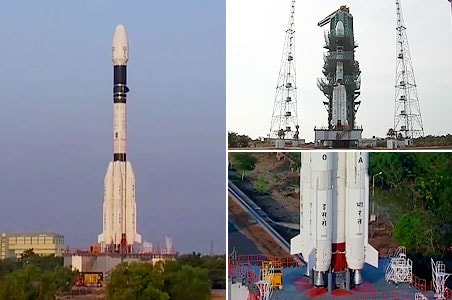
The launch of the GSLV rocket, which will carry the weather satellite INSAT-3DR, has been delayed by 40 minutes over an 'anomaly', the Indian Space Research Organisation or ISRO has said. The take-off, from the launch pad of Sriharikota, Andhra Pradesh, was scheduled for 4.10 pm, but will now be held at 4.50 pm.
Here are the Top 10 points to this big science story
ISRO had stopped the countdown to the lift-off as issues were seen while filling up propellants for the cryogenic engine. The countdown has now resumed.
Cryogenic engines are special rocket engines that use liquid oxygen and liquid hydrogen as fuel. The extremely cold temperatures of these liquids make them tricky to operate.
India took 20 years to master this technology after Russia reneged on a deal to transfer the technology in the early 1990s at the behest of the US.
The success of GSLV (Geo-synchronous Satellite Launch Vehicle) is crucial for India since it will be the vehicle to launch the second moon mission -- Chandrayaan-2 -- next year. It will also boost the nation's efforts to make a dent in the multi-billion dollar commercial space launcher market.
The 415-tonne GSLV rocket, with its indigenous cryogenic engine, is being tested for the tenth time. This is its first operational launch.
Dubbed the "naughty boy," this rocket has had a patchy record, with five of its nine flights resulting in failure.
The rocket is almost 49 meters high -- as much as a 17-floor building. It weighs 415 tons -- as much as the combined weight of 80 full grown elephants.
Rocket launches are still a very risky business, which became evident when the Falcon- 9 rocket by Space-X exploded on a launch pad in USA on September 1. Space-X is a private company owned by billionaire Ellon Musk, which is now experimenting with cheaper space launches.
The GSLV will be carrying the 2211-kg INSAT 3DR, which will eventually be placed in an orbit 36,000 km above Earth. What makes the satellite special is its imaging capabilities for night-time pictures. It also carries a special search and rescue transponder, which will help in satellite-aided rescue operations.
Together, they represent an expenditure of Rs 400 crore.

